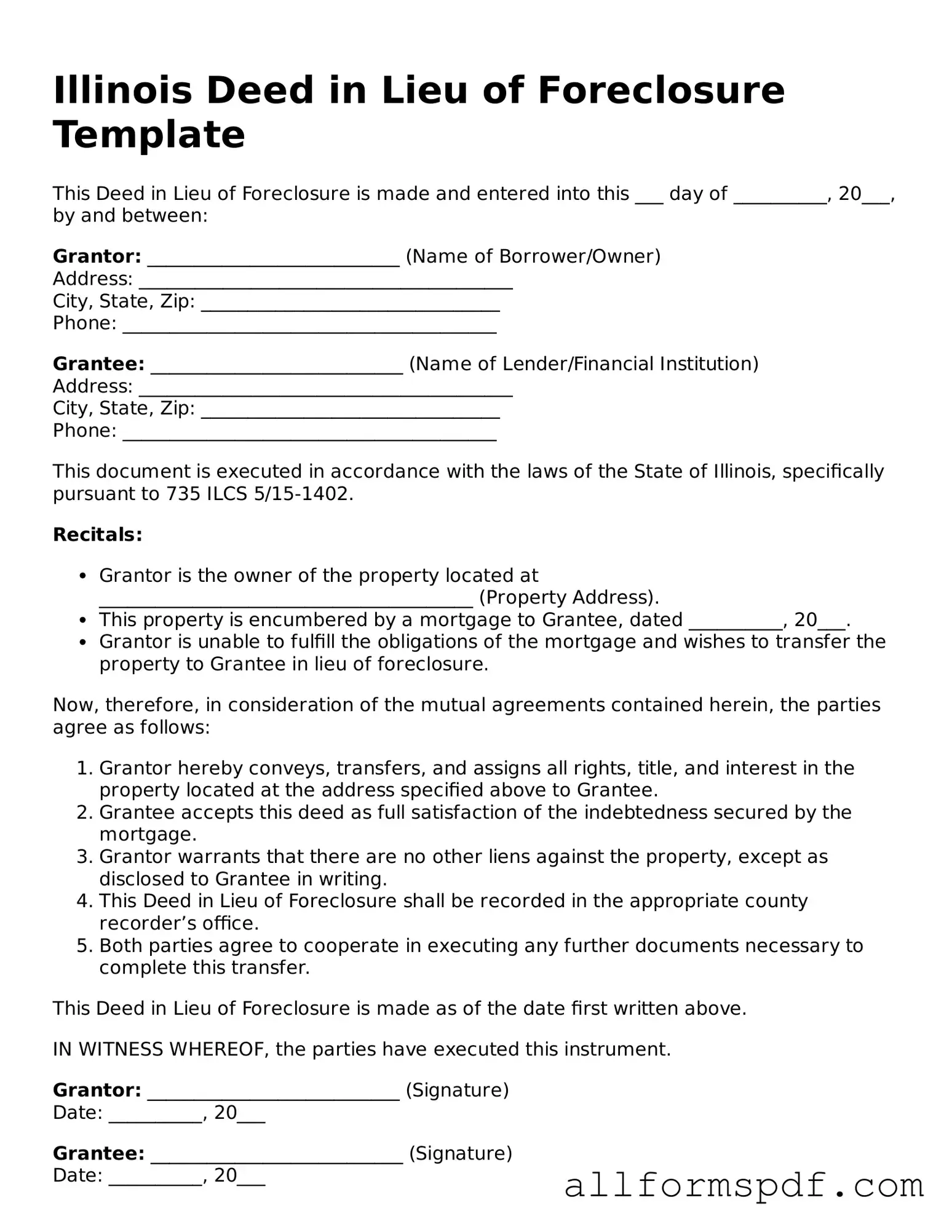Filling out the Illinois Deed in Lieu of Foreclosure form requires careful attention to detail. One common mistake is failing to provide accurate property information. This includes not only the legal description but also the correct address. Inaccurate information can lead to delays or even rejection of the deed.
Another frequent error is neglecting to include all necessary signatures. Both the borrower and the lender must sign the document. If one signature is missing, the deed may not be legally binding. It’s essential to ensure that all parties involved are present and have signed the form before submission.
People often overlook the importance of notarization. The Illinois Deed in Lieu of Foreclosure must be notarized to be valid. Failing to have the document notarized can invalidate the deed, causing further complications in the foreclosure process.
Additionally, many individuals do not read the instructions carefully. Each section of the form must be filled out according to the guidelines provided. Misinterpretation of the instructions can lead to incomplete or incorrect submissions.
Another mistake is not providing a clear statement of intent. The purpose of the deed must be explicitly stated to avoid confusion. A vague or ambiguous intent can result in misunderstandings and legal challenges down the line.
Some people also forget to include any additional documents that may be required. This could include a letter of authorization or other supporting materials. Missing documents can stall the process and create unnecessary hurdles.
Inaccurate dates are another common pitfall. The form requires specific dates, such as the date of the transfer and the date of signature. Errors in dating can lead to disputes or questions about the validity of the deed.
It’s important to consider the implications of the deed. Some individuals may not fully understand the consequences of signing a Deed in Lieu of Foreclosure. Consulting with a legal professional beforehand can prevent misunderstandings regarding rights and obligations.
Another mistake is neglecting to keep copies of the completed form. After submission, it’s vital to retain a copy for personal records. This documentation can be crucial in the event of future disputes or inquiries.
Finally, people often underestimate the importance of timelines. There are specific deadlines associated with the Deed in Lieu of Foreclosure process. Missing these deadlines can result in the loss of the opportunity to proceed with this option, forcing individuals to consider less favorable alternatives.
